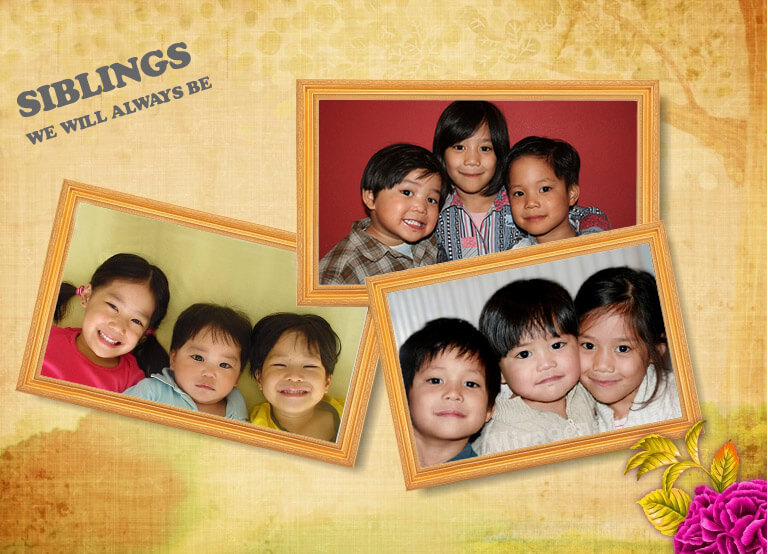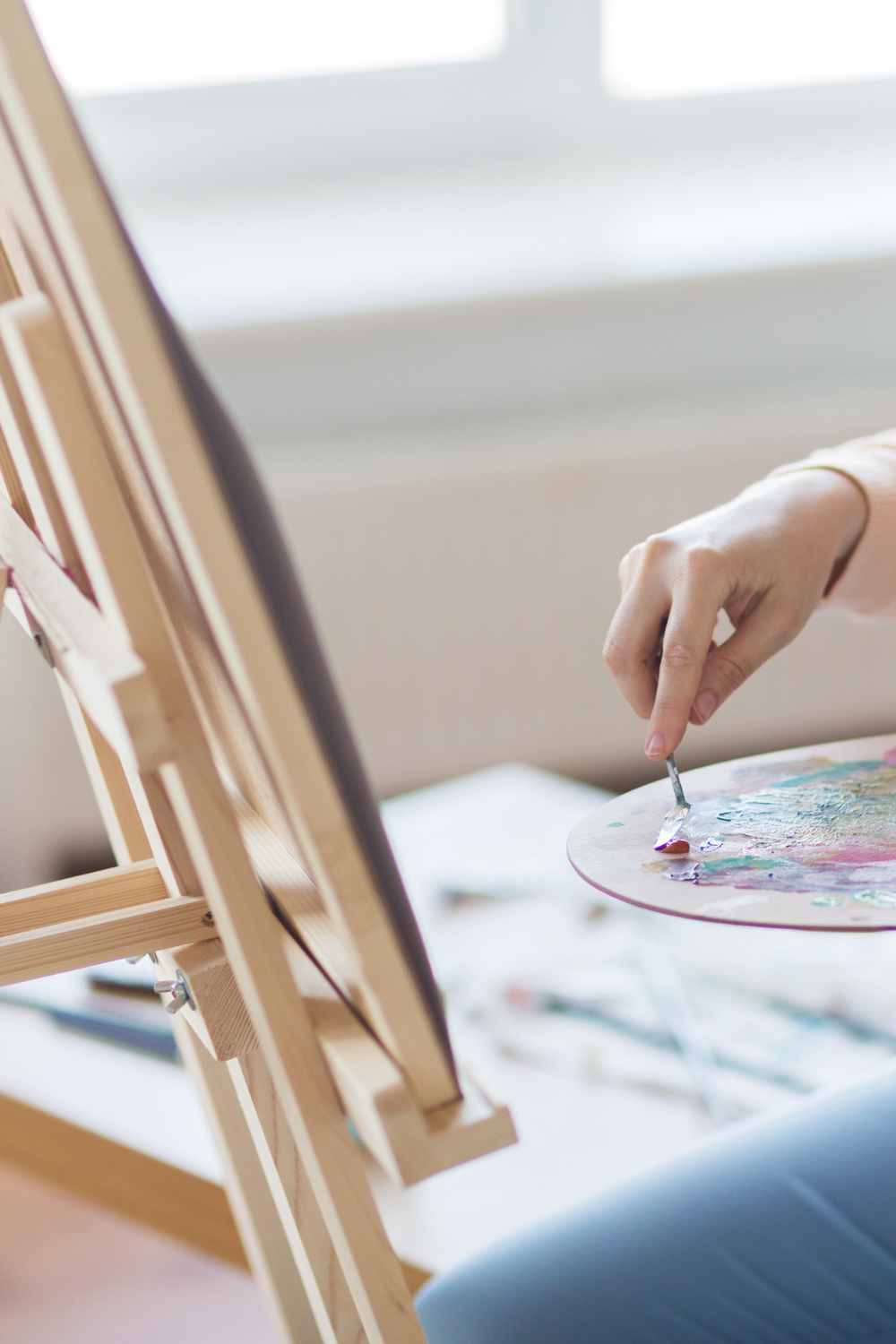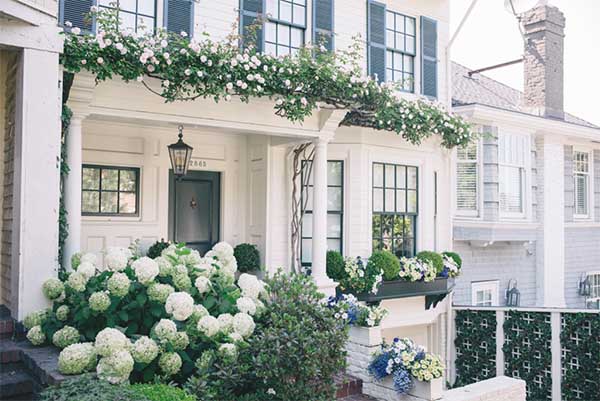
Venice Biennale, the colossal international art exhibition featuring architecture, visual arts, cinema, dance, music, and theatre held in the Castello district of Venice every two years during the summer is on its 60th year. Titled Stranieri Ovunque – Foreigners Everywhere, it is organized by La Biennale di Venezia and curated by its first Latin American director, Adriano Pedrosa.
The exhibit opened to the public on April 20, and will run until November 24, 2024, at the Giardini della Biennale and the Arsenale. The pre-opening was slotted on April 17, 18, and 19; and April 20, 2024 was also the inauguration and awards ceremony. Works are spread across two large groups, the ‘Nucleo contemporaneo’ (Contemporary nucleus) and ‘Nucleo storico’ (Historical nucleus).
So a group of us (artists and aesthetes in our own rights) went to get away from the monotonous Vienna life to immerse ourselves in art, and the charm that the City of water holds. But the Biennale is our main purpose, since it is one of the most prestigious cultural institutions in the world, with a rich history that dates back over a century.

Table of Contents
Here is a brief overview of Biennale’s history:
Foundation and Early Years (1895-1914):
The Venice Biennale was founded in 1895 by the Venetian City Council to promote contemporary art and culture.
The first exhibition, held in the Giardini della Biennale, was a significant success, attracting artists and visitors from around the world.
Early editions showcased a mix of international and Italian artists, establishing the Biennale as a major event in the art world.
Interwar Period and Expansion (1920-1938):
After World War I, the Biennale resumed in 1920 with a renewed focus on internationalism.
During the 1930s, new pavilions were built in the Giardini to accommodate the growing number of participating countries.
The Biennale began to include other art forms, such as music (1930), cinema (1932), and theatre (1934), expanding its cultural scope.
World War II and Post-War Era (1940-1958):
The Biennale was suspended during World War II but resumed in 1948, symbolizing a return to cultural normalcy.
The post-war editions featured influential modern artists, including Pablo Picasso and Jackson Pollock, reflecting the shifting trends in contemporary art.
1960s and 1970s: Political and Social Engagement:
The 1960s saw the Biennale becoming more politically engaged, reflecting the social upheavals of the time.
The 1968 edition was notably disrupted by protests, leading to significant changes in the organization and structure of the event.
The Biennale began to embrace more avant-garde and experimental works, highlighting the dynamic nature of contemporary art.

1980s to Early 2000s: Globalization and Inclusion:
In the 1980s, the Biennale continued to expand its international reach, incorporating artists from previously underrepresented regions.
The Art Biennale became increasingly thematic, with curators exploring specific concepts and trends.
The establishment of the Aperto section in 1980 provided a platform for younger, emerging artists.
Recent Developments (2000-Present):
The Biennale has continued to grow, now including the Venice Architecture Biennale (established in 1980) as well as the art, film, music, theatre, and dance sections.
Recent editions have focused on global issues such as climate change, migration, and social justice, reflecting the Biennale’s commitment to addressing contemporary concerns.
The Biennale remains a vital platform for the exchange of ideas and artistic innovation, drawing participants and visitors from around the world.
Why Venice is the ideal venue for the Biennale

Venice’s combination of historical richness, stunning scenery, evolving art scene, and prestigious reputation makes it the perfect venue for the Biennale, offering an unparalleled setting that enhances the impact of the event.
Historic and Cultural Significance : Venice’s rich history and cultural heritage make it a fitting backdrop for an international art exhibition. The city has been a hub of art and culture for centuries, providing a context that enhances the experience of contemporary art.
Picturesque Setting : Venice’s unique and picturesque cityscape, with its canals, historic architecture, and charming streets, offers a stunning environment that inspires artists and attracts visitors. The beauty of the city itself becomes a part of the art experience.
Graffiti and Street Art : While Venice is known for its classical art and architecture, it also has a growing street art scene that contrasts intriguingly with its historic setting. This blend of old and new art forms adds a dynamic element to the Biennale, showcasing a range of artistic expressions.
Accessibility and Prestige : Venice is a globally recognized city, easily accessible from major cities around the world. Its established reputation in the art world lends prestige to the Biennale, attracting top artists and large audiences.
Unique Venues : The city’s historic palazzos, churches, and public spaces provide unique and diverse venues for art installations. These spaces add an extra layer of meaning and interaction between the artwork and its surroundings, creating a more immersive experience.
Global Artistic Hub : Venice has long been a meeting point for artists, curators, and art lovers from around the globe. The Biennale capitalizes on this, fostering international collaboration and dialogue within the art community.

Foreigners Everywhere
Our first stop was the Arsenale, as it was easily accessible from St.Mark’s square – although we had to take a water taxi as most of the inner river’s routes were closed to give way to a regatta, there were no water buses that morning.
Right off the bat, the theme becomes obvious as art enthusiasts (read : we) are greeted by Yinka Shonibare’s Refugee Astronaut VIII. It is a life-size, nomadic astronaut wearing a Dutch wax printed cotton textile and moon boots. It stands as though it is prepared to handle humanitarian and ecological emergencies. The figure, bearing a mesh sack brimming with material belongings, represents the difficulties associated with displacement.
Claire Fontaine’s Foreigners Everywhere (Self-Portrait), the piece that inspired this year’s title is a double-sided, wall or window mounted neon, made from framework, transformers, cables, and fittings with variable colors hangs above, an opener that shows Adriano Pedrosa‘s goal of including foreigners – the concept of which can be examined through various lenses.

From a geographical standpoint, a foreigner is typically defined as a person who originates from a different country or region. This geographical boundary can shape one’s identity and experience in several ways like cultural differences, legal status, and social integration. Thus, wherever you go, you will encounter a foreigner, or you would be the foreigner.
Choices play a crucial role in defining and understanding foreignness. These choices can include:
Voluntary vs. Involuntary Migration : Some people choose to move to a new country for better opportunities, education, or personal reasons, while others may be forced to migrate due to conflict, persecution, or environmental factors.
Assimilation vs. Preservation : Foreigners may choose to assimilate into the host culture to various degrees, or they might actively preserve their cultural heritage and identity.
Economic Decisions : Choices related to employment, education, and living arrangements can influence how foreigners navigate their new environment and how they are perceived by others.
There is also the foreignness that society has with accepted norms. It refers to the ways in which individuals or groups perceived as foreign or different challenge, deviate from, or contrast with the established norms, values, and practices of society.
Examples of foreignness and accepted norms include the following but are not limited to:
Immigrant Communities : In many countries, immigrant communities maintain distinct cultural practices that differ from mainstream norms. This can be seen in ethnic enclaves where language, food, and traditions are preserved.
Gender and Sexuality : Those who identify with non-binary or LGBTQ+ identities may encounter additional layers of foreignness in societies where traditional gender roles and heteronormativity are the accepted norms.
Religious Diversity : The introduction of new religious practices and holidays by foreign populations can challenge the secular or religious norms of (the host) society, requiring accommodations such as new public holidays or dietary options in public institutions.
There is of course, the foreignness one feels within the self. This could refer to the internal sense of alienation, disconnection, or difference a person experiences in relation to their own identity, beliefs, or surroundings.
This dynamic and sometimes contentious relationship between those perceived as outsiders and the established norms of a society is what curator Adriano Pedrosa wants to include in the exhibit. This inclusion can open discussions to cultural enrichment and greater inclusivity and also highlights integration, identity, and social cohesion.
Large-scale exhibits

Biennale Arte 2024: Stranieri Ovunque – Foreigners Everywhere, Mataaho Collective’s Takapau (2022)
There are a number of floor to ceiling installations and other large-scale pieces this year at the Arsenale. Here are some:
Upon entry, we were greeted by the Mataaho Collective’s Takapau, which occupies the entire room. The work is inspired by whariki takapau, finely woven mats used in special events such as weddings. Mataaho Collective is four Māori women (Erena Baker Arapere, Sarah Hudson, Bridget Reweti, and Dr. Terri Te Tau) creating large-scale installations credited as a single authorship. Takapau is intricately made of Polyester hi-viz tie-downs (6km), stainless steel buckles, 480 rachets and 960 j-hooks.

Frieda Toranzo Jaeger’s Rage Is a Machine in Times of Senselessness is a multi-panel work of oil and embroidery on canvas that spans 1,500 × 480 cm across one of the rooms. As huge as this installation is, there’s so much going on that you might miss the smaller details, exhaust pipes, bleeding palms, queer women on a cloud (a nod to Sappho of Lesbos, which the artist referenced at the back of the canvas) can be seen.
 Base(d) on the Poetry of Sappho Poem:
Base(d) on the Poetry of Sappho Poem:
“The marriage of Hektor and Andromache”
Fragments.
I will let my body flow like water over the gentle cushions
Them love shook my heart like the wind that falls on oaks in the mountains
You came, and I was mad to have you
Your breath cooled my heart that was burning with desire
I was in love with you. Attis, once, long ago
(fragment 38) “you Burn me”
SAPPHO OF LESBOS (c.630 BC – 570 BC)
Other items on the canvas include ferns, cut watermelons, red threads, crimson smoke and if you look closely, it is one of several pieces that references Palestine. Frieda Toranzo Jaeger also made sure that her signature is exaggeratedly large, in a way pointing out that the art scene shouldn’t be dominated by male authorship.

Unassuming at first look, Dana Awartani’s Come, let me heal your wounds. Let me mend your broken bones is more than just pieces of brightly colored panel fabrics hanging in a beautiful array. Awartani, a Saudi visual artist, of Palestinian ethnicity explore themes of sustainability and cultural destruction in this work.
This piece looks as though it has been immaculately done, but upon closer inspection, one can see holes and punctures that have been meticulously mended (355 in total) through darning. (Click here for a bigger version.)
The holes represent buildings or places that have either been completely destroyed or subjected to ongoing violence as a result of war, colonialism, or acts of terror in Saudi Arabia, Syria, Tunisia, Libya, Iraq, Egypt, and Yemen. Darning represents the possibility of healing and rejecting the polluting effects of big industries.
Furthermore, the textiles were dyed using about fifty different herbs and spices, all of which had cultural connotations and medicinal value, a practice observed in Kerala, India and what Awartani has learned at some point. These not only embody ancient wisdom, but were also considered therapeutic fabrics.

Perhaps the biggest mural painting spanning 2715 × 600 cm at the Arsenale’s Nucleo Contemporaneo is Aravani Art Project’s Diaspore. It was created by a collaboration consisting of both cis and transgender women. The piece, which celebrates the 10th anniversary of the Indian judiciary’s recognition of transgender people is symbolized by a freed caged bird. It suggests that people who do not identify with their assigned gender frequently feel alienated in their bodies, an example of foreignness one feels within the self. Through the use of the vivid hues of the LGBTQIA+ flag, the project seeks to imagine a society in which all identities are welcomed and where they would not feel uncomfortable.
Philippine Representatives
Pacita Abad
Pacita Abad was an Ivatan and Filipino-American artist known for her commitment to social causes and being an escapee of the Marcos regime having been born to a political family. She’s also known for creating large scale, bright ‘trapunto’ pieces, a technique used in sewing and stuffing that gives her canvases a 3d appearance. Abad’s oeuvre comprises textiles, acrylic, threads, and padded cloth among others. These are evident in her works “You Have to Blend In, Before You Stand Out“ and “Filipinas in Hong Kong“.

Joshua Serafin
A multidisciplinary artist that combines dance, performance, visual arts and choreography, Joshua Serafin, born in Bacolod, Philippines but is currently based in Brussels is taking the European art scene by storm.
VOID is a blend of intricate choreography, ethereal soundtracks, and complex mythology with cross-cultural and transgenerational allusions to time, space, and change. It depicts the birth of a god(dess) in a 12-minute audiovisual piece – how the want to breakthrough from the norm includes pain, anguish, and grief fluidly seen in the overall choreography, a representation of our society.
You can see a raw footage of the performance here <- click.

Markus Salvatus
Sa kabila ng tabing lamang sa panahong ito loosely translated Waiting just behind the curtain of this age is a collection of indigenous and popular histories that describe the shape of the present world gradually emerging from the pandemic. It weaves together the research Salvatus is doing in relation to indigenous narratives in Mount Banahaw and in Lucban, compiled from collected documents and photos of families, popular materials, and various stages of history and legends.

This stage of textiles, stone carvings, and shaped music is a presentation of the encounter at Mt. Banahaw, a magical mountain with three peaks at the border of Laguna and Quezon, and Lucban, the town where the artist was born. In the center of the pavilion, there is a video documentation of musicians traversing the mountain, each with their own choice instrument.
Behind the exquisite curtains is an arrangement of fiberglass boulders with trumpets protruding from their surfaces, as if they were jammed into the concrete before it set. The sounds that one can hear at the foothills of Mt.Banahaw can be heard in various degrees from these boulder trumpets.

Through a newly commissioned video creation, a mise-en-scène of curtain fabric and large fiberglass stones, and again bringing the old creation to life, Salvatus explores the ethnoecology of Mount Banahaw-how the environment more in the human world includes cultural interaction: from how people perceive and act in the environment to the extent that consideration of the environment will give shape to cultural life.

—
Adriano Pedrosa, being the first non-european curator is himself somewhat a foreigner to this colossal exhibit. He highlights the diversity of art produced throughout the world both now and, in conjunction with the historical section, throughout the 20th century. It concentrates on Indigenous artists, those that haven’t been represented at the Biennale before, and those that are seen as foreign because of personal choices, where they come from, and what they believe.
While most that we featured today are large scale pieces, art transcends the physical dimensions of its canvas nor by the fame of the artist behind it. The essence of art lies in its ability to evoke emotions, provoke thought, and communicate ideas, regardless of size. A small, intricate piece can be as powerful and impactful as a large mural. What truly defines art is the vision, creativity, and intent behind the work, not the scale on which it is executed. In this Biennale, lesser-known artists (to the world) have created pieces that are just as meaningful, inspiring, and masterful as those created by renowned figures.
(See the other pieces that we love in the next articles in weeks to come.)
Tips for when you plan on going :
Buy your ticket online – saves you time and the possibility of being lost in translation. Lost precious minutes explaining to the ticket booth master we only need tickets for a day (the thirty euro one, and not the forty euro one).
Spend a week because there’s really so much to see and digest.
Eat before you go in.
Get souvenirs.
Watch out for other installations all throughout the city.







Such wonderful pieces of art! The massive ones are very impressive
This looks like such a neat exhibition. I always like checking out and learning about pieces of art.
Those paintings and artworks are amazing, I see now why artists flock to see them in Venice!
Venice has been on my to-visit list for so long. This post makes that even more prevalent to me. 🙂
The Venice Biennale’s origins are fascinating! It’s incredible to see how it’s grown from a local event into a major international art showcase.
Happy to know that there is a Philippine representation at Stranieri Ovunque – Foreigners Everywhere. I have actually read about this in Vogue and this just makes me proud as a Filipino. Adriano Pedrosa definitely did a great job curating. This is indeed the largest number of Filipino artists participating in Biennale.